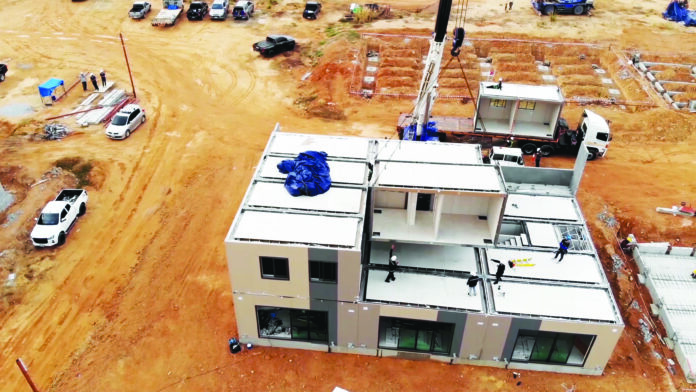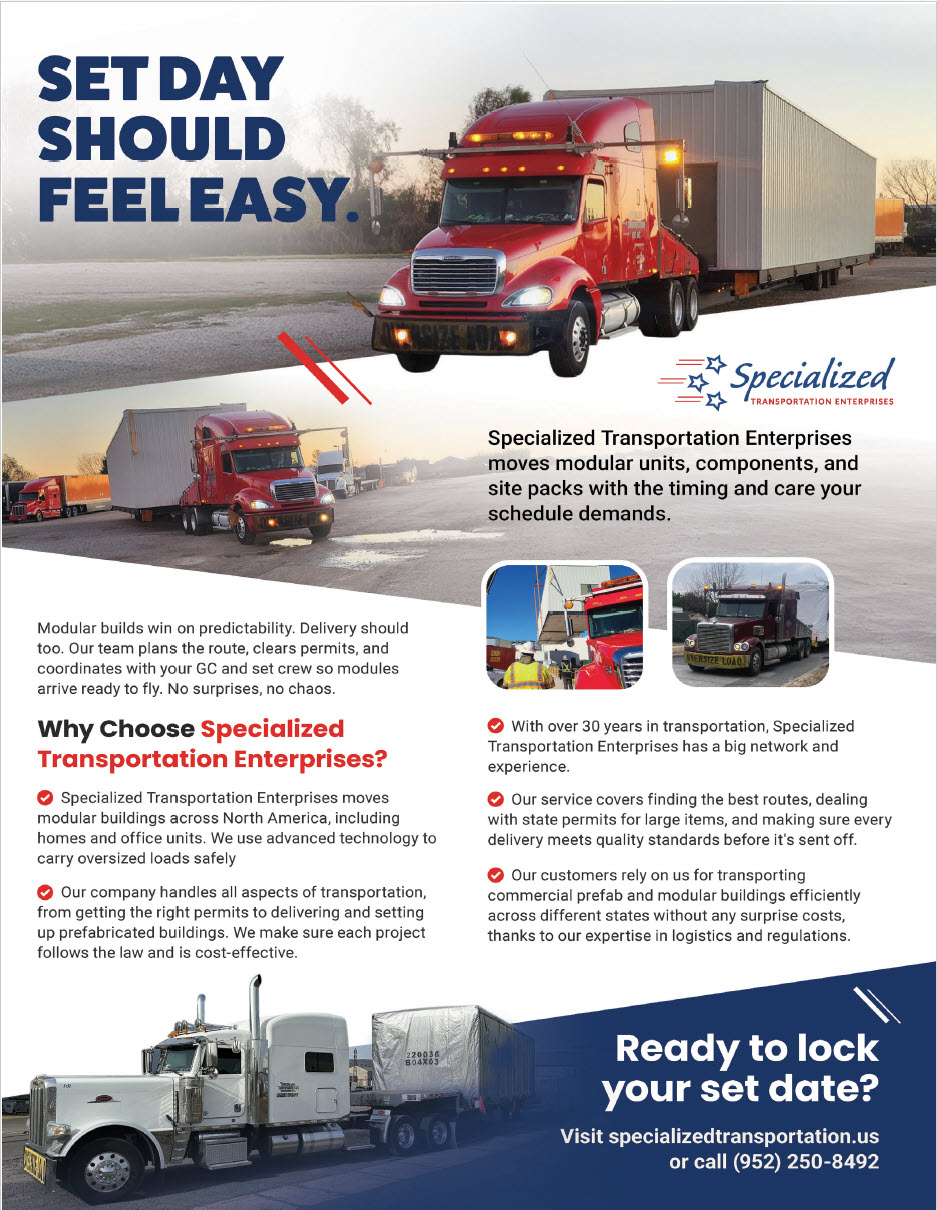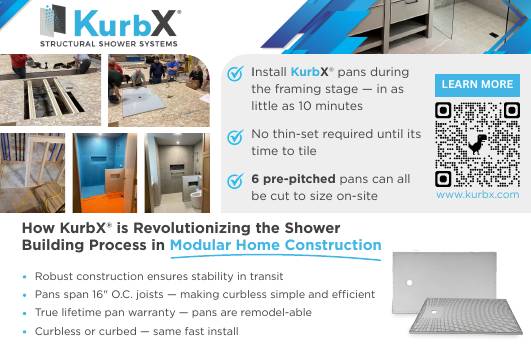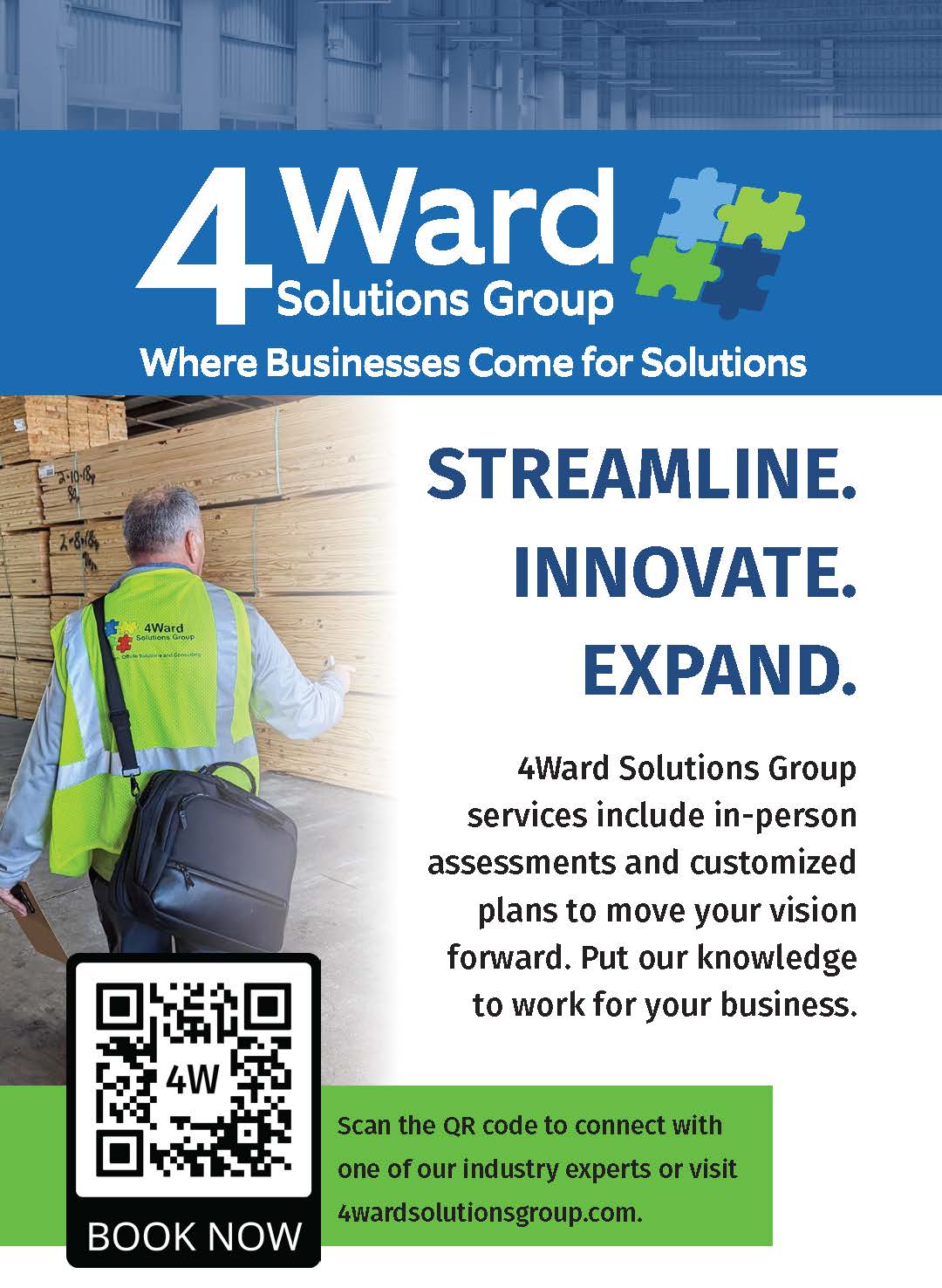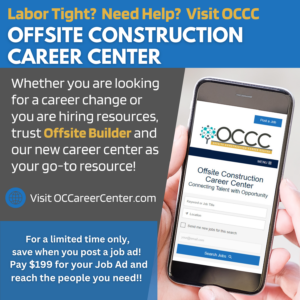If modular is to thrive into the future, factories must either become builders, or they must partner with large, growth-oriented builders.
My previous two articles (see the February and March 2025 issues) detailed how single-family modular (SFM) is on the decline because of a shrinking builder base. If you’re new to this series of articles, you might want to revisit them.
I remain optimistic about modular’s potential, but for that potential to be realized, factories will need to take a more active role in developing and enhancing the SFM ecosystem, and that will mean embracing new ideas. A few of these ideas are detailed below. For them to make sense I first must emphasize what I believe to be an uncommon opinion in the SFM manufacturing world: Homebuilders are equally as important to the overall ecosystem as factories.
For the past 30 years, factories have considered themselves the top of the food chain, with builders serving as their means of delivering products to homeowners. This approach has been effective because there has been a sufficient number of builders willing to follow it. In the past, most builders were small and had little interest in the industry beyond the narrow, specific market they operated in, so factories had to take the lead. Factories were well organized, had a broader market perspective, and were well capitalized. Their assumption of the leadership role benefited everyone.

The one activity those factories did not get involved in was sales and marketing to the end user; instead, they focused on engineering, efficiency, and factory production — essential skill sets that have served them well. They left sales and marketing to their local builders, who were better at that part of the business.
This worked great for a long time, but with a dearth of people willing to become builders it doesn’t work so well anymore. To make matters worse, the gray tsunami is hitting the industry hard, with many builders and skilled workers retiring. The result has been a decline in SFM sales, lower factory output and an overall threat to the industry.
If you doubt this, I suggest tracking the number of modular factory closures starting with the 2016 implosion of All American Homes/Excel/HIG Capital up to current-day closures. This does not even account for the reduced output of many current factories. It is an ugly picture. The current trajectory points to a poor end for all of us.
We, as an industry, must change. We must try new things. Below are three ideas that I see taking root. One I am deeply involved with, while the other two I watch from afar. One or all of these new paths may blossom and reinvigorate the industry.
The danger in promoting new methods is that I come off as a know-it-all. Far from it. I have plenty of scars and humility from my younger days when my personal philosophy was ready-shoot-aim. I share these ideas in the spirit of country music singer/songwriter Eric Church’s lyrics, “I know I don’t probably know what I think I do//But there is somethin’ to some of it.”
If modular homebuilding is to thrive into the future, factories must either become builders, or they must partner with larger, more growth-oriented builders than they have in the past.
Factory as Builder
One approach to expanding modular’s market share is for more factories to become vertically integrated. This is where a single company owns the entire process from the sales and marketing, to manufacturing, to on-site assembly, to the handing of keys to the homeowner. Homeway Homes in Illinois was one of the few that fully expanded into this method. Other factories have tried it on a limited scale. It has often taken the form of a sales center located right next to the factory or an “in-house” builder operating in a location next to the factory.

This is a challenging approach because factory operation and on-site building require quite different skill sets and business practices. It is more common in the manufactured home world, but may be a path forward that modular factories follow out of necessity.
Growth-Oriented Builders
The next two approaches are for factories to seek out and partner with growth-oriented builders who offer a larger market footprint than their traditional small-builder base. The two types of growth-oriented builders are franchise and company-owned.
Franchise. This business model is just like it sounds. The franchisor sells the franchisee a territory and a proven set of business practices. The franchisee benefits from being part of a national brand, from operational guidance and from the franchise’s buying power.

This business model can be located almost anywhere because it’s a self-contained, all-inclusive system. I refer to it as a Builder-In-A-Box because it includes everything the local builder needs to get started and be successful. The local builder will benefit from having access to multiple factories where the franchisor has developed a business relationship.
In the past, factories were responsible for recruiting and training builders, but this business model outsources all of the recruiting and training to the franchisor. A modular factory can partner with the franchisor to target geographic areas where both see opportunities for sales. Impresa Modular is the best-known practitioner of this method.
Company-owned. The other type of growth-oriented builder that factories will want to seek out as partners is a company that operates in multiple locations serving multiple markets. These could include national or regional builders.
This type of homebuilding company will typically partner with different factories to serve the different geographical locations where it operates. It benefits from tight management and consistent, proven business practices across all locations. It has the efficiency of reducing overhead and marketing costs across multiple locations. These regional builders can adapt their approach to the demands of each local geographic market.
An example of this strategy is Griffith Homebuilders, the company I own. This strategy replaces factory builder recruitment; instead, the factory and the growth-oriented builder work together to identify new locations/markets. It is another way factories can outsource their new-builder recruitment and training function.
Seasoned modular factory executives may read this article and lament that it’s too difficult to implement any of the strategies. But while none of these approaches will be easy, they nevertheless represent the future. I remember the disdain I heard twelve years ago from factory executives when they first heard of Impresa Modular. The most common refrain was, “you can’t sell our homes on the internet.” Since then, however, Impresa has become one of the largest sellers of SFM homes in the country.
We, as an industry, are in decline. To reverse this, it is going to take new strategies.
Shawn Corkrean is the owner of Griffith Homebuilders of Iowa. They sell and build modular homes in Iowa and Nebraska. www.GriffithHomeBuilders.com Shawn has experience as a real estate agent, land developer, factory sales manager, and 20 years as a home builder (stick and modular). He can be reached at [email protected]


